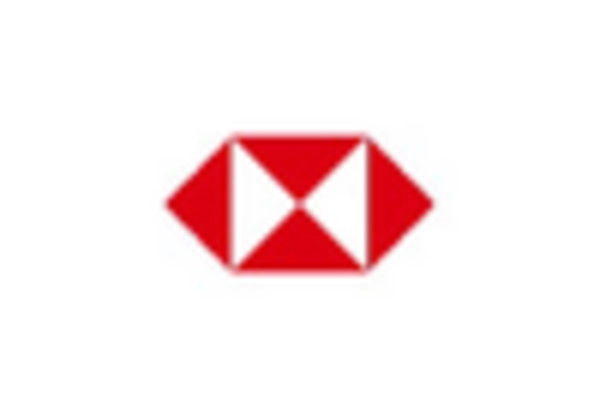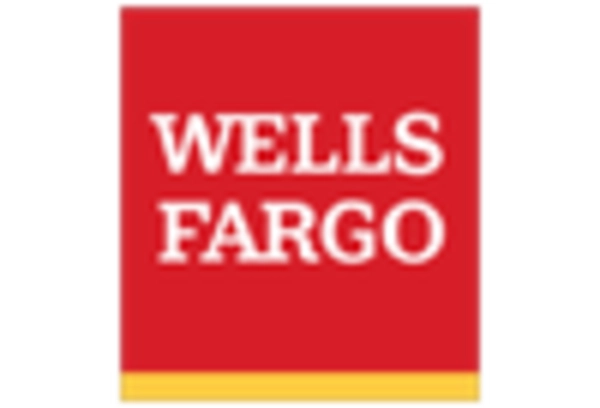The Mobile Banking Application Market is currently characterized by a dynamic competitive landscape, driven by rapid technological advancements and evolving consumer expectations. Key players such as JPMorgan Chase (US), Bank of America (US), and HSBC (GB) are strategically positioning themselves through digital transformation initiatives and innovative service offerings. These companies are not only enhancing user experience but also expanding their operational capabilities to cater to a global audience. The collective focus on integrating advanced technologies, such as artificial intelligence and machine learning, is reshaping the competitive environment, fostering a race towards superior customer engagement and operational efficiency.
In terms of business tactics, major players are increasingly localizing their services to meet regional demands while optimizing their supply chains for enhanced efficiency. The market appears moderately fragmented, with a mix of established banks and emerging fintech companies vying for market share. This competitive structure allows for diverse offerings, yet the influence of key players remains substantial, as they leverage their resources to set industry standards and drive innovation.
In September 2025, JPMorgan Chase (US) announced the launch of a new AI-driven personal finance management tool within its mobile banking application. This strategic move aims to provide customers with personalized financial insights and budgeting assistance, thereby enhancing user engagement and retention. The introduction of such innovative features is likely to solidify JPMorgan's position as a leader in the mobile banking space, catering to the growing demand for personalized banking experiences.
Similarly, in August 2025, Bank of America (US) unveiled a partnership with a leading fintech firm to enhance its mobile payment solutions. This collaboration is expected to streamline transaction processes and improve security measures, addressing consumer concerns regarding digital payments. By aligning with fintech innovators, Bank of America is not only expanding its service offerings but also reinforcing its commitment to providing cutting-edge financial solutions.
In July 2025, HSBC (GB) launched a sustainability-focused initiative within its mobile banking platform, allowing users to track their carbon footprint and make eco-friendly financial choices. This initiative reflects a growing trend towards sustainability in banking, appealing to environmentally conscious consumers. By integrating sustainability into its mobile banking services, HSBC is likely to attract a new segment of customers who prioritize ethical banking practices.
As of October 2025, the competitive trends in the Mobile Banking Application Market are increasingly defined by digitalization, sustainability, and the integration of artificial intelligence. Strategic alliances between traditional banks and fintech companies are shaping the current landscape, fostering innovation and enhancing service delivery. Looking ahead, it appears that competitive differentiation will evolve from traditional price-based competition to a focus on technological innovation, customer-centric solutions, and supply chain reliability, as companies strive to meet the ever-changing demands of the market.

















Leave a Comment